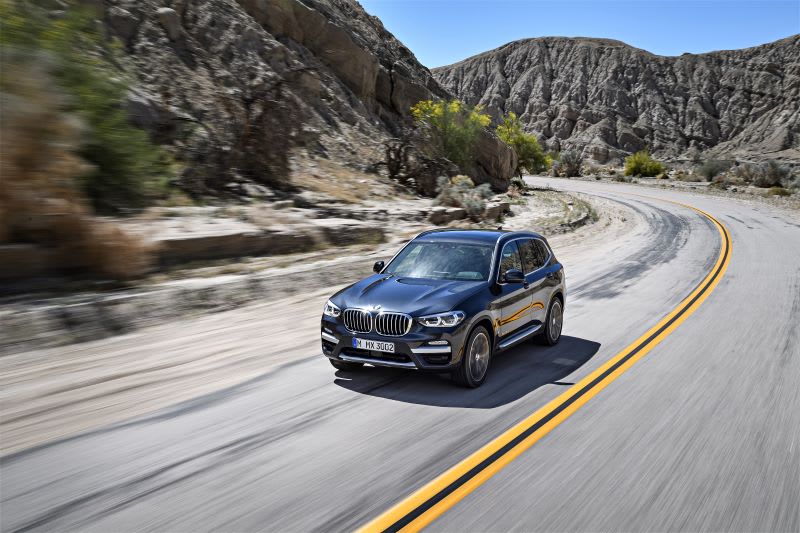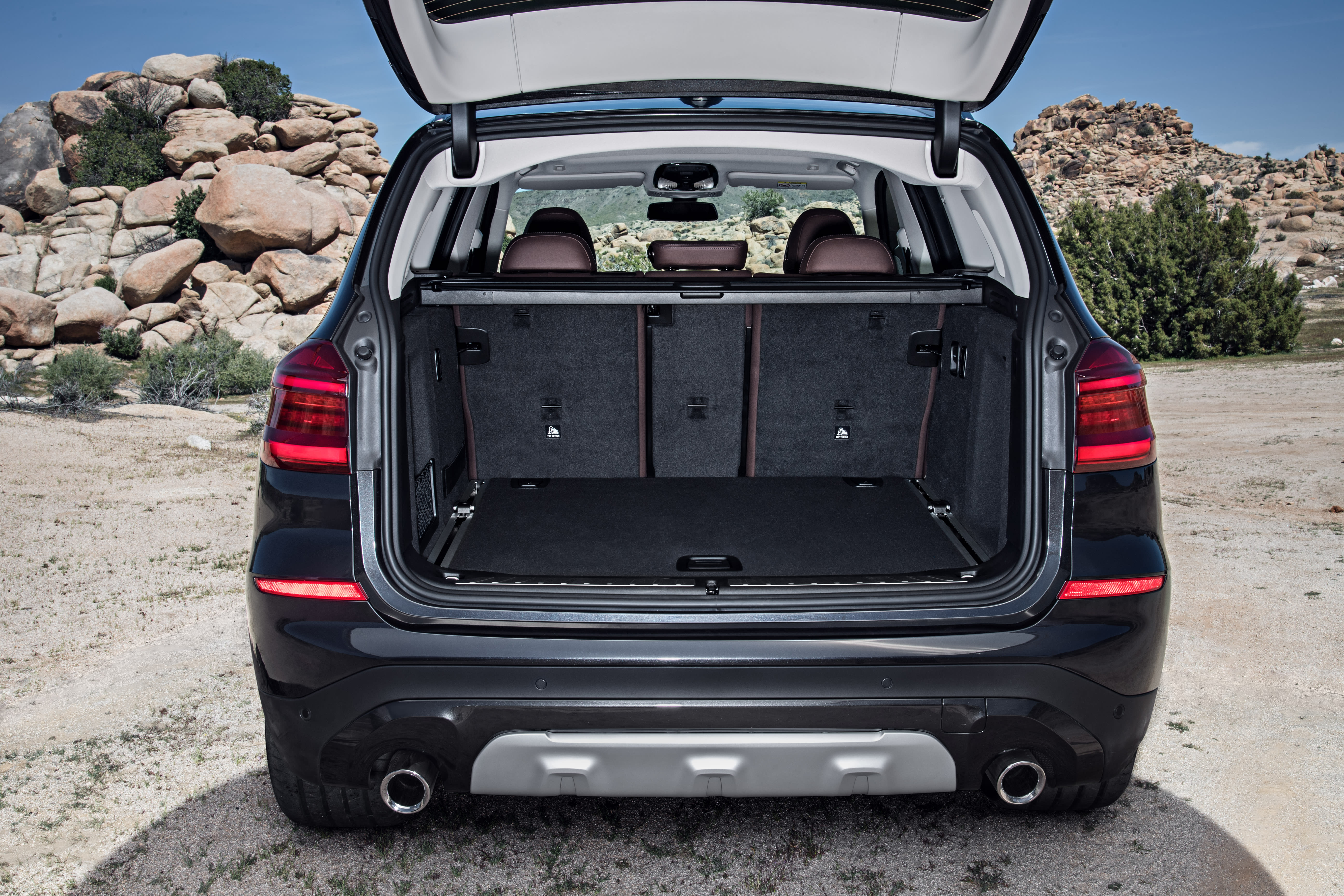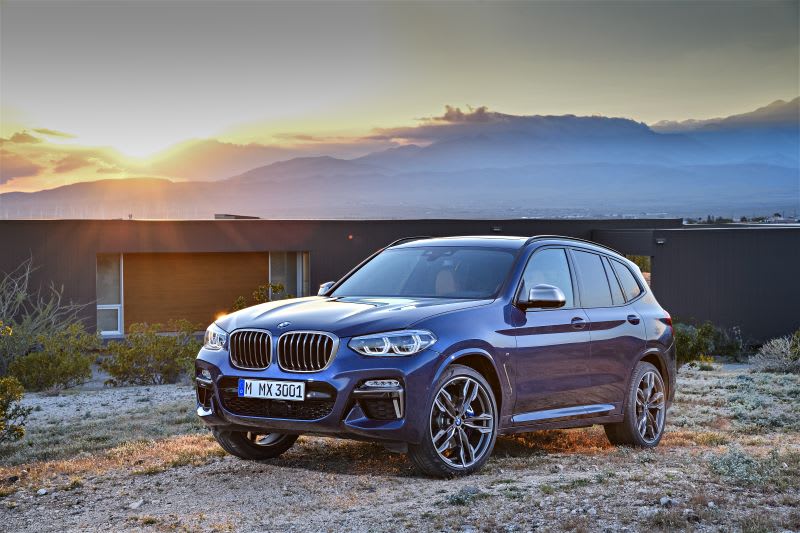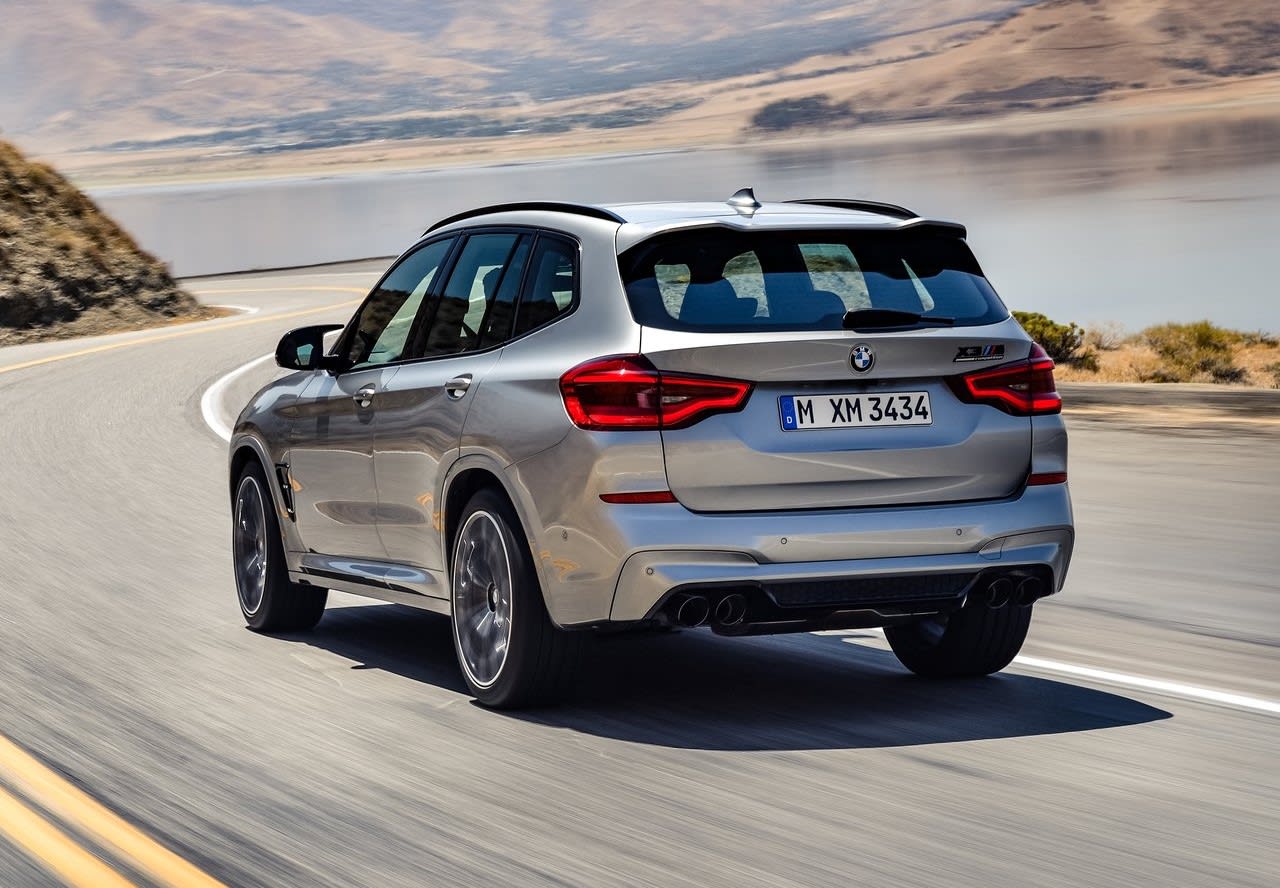
BMW X3 Review & Pricing

Introduction
The SUV market has boomed in recent years, and manufacturers have upped their games to create their high-riding models more compelling. No car exemplifies this more than the BMW X3. Once derided for being a slightly awkward and unappealing halfway house between the fabulous X5 and its more conventional estate-car cousins, the car has evolved and developed into a mainstay of the BMW line-up.
Even with the brilliant 3 Series, the stunning 5 Series and the sporty Z4 all on offer, the X3 remains one of the highlights. And that’s quite an accolade.
Review Sections
Select's rating score* - 4.3 / 5
At a Glance
The X3 is a consummate all-rounder, offering drivers the handling and performance of a well-sorted family hatchback with the space and practicality of a bigger estate car. It gets the off-road ability and luxury of a premium-class 4x4, too, making this something of a do-anything car.
It’s well equipped, too, with satellite navigation, alloy wheels and even a reversing camera thrown in with every model. The basic SE kind of has everything you need, while the xLine adds some rugged body features and a little extra kit. But the M Sport is the desirable one, with sporty suspension, slightly sporty styling and even more standard equipment. If you want, you can go for the M40i or M40d models, which add some more performance and bigger wheels, or even the X3 M Competition, which really goes to town on the performance front.

But all you really need is a 30d diesel or 30e plug-in hybrid in SE or xLine guise. That will certainly be all the car you ever need, but the 30d M Sport might just be the car you want.
Key Features
While performance and driver involvement has long been a key selling point of BMWs, the X3 has far more strings to its bow. The build quality is also a major attraction, but it’s the on-board tech that might really draw customers in.
The iDrive infotainment system is brilliant, what with its choice of input methods and its clean, logical layout. The graphics are really sharp but the displays never fall into the trap of offering too much information. It’s almost minimalist in its approach. Add in the ability to use the system without taking your eyes off the road, and you end up with something really attractive.

The X3 is also fitted with some great seats, which make it a very comfortable car in which to while away long journeys. With support in all the right areas and decent levels of adjustment, the BMW is able to make the most of its impressive ride characteristics.
Performance & Drive
X3 customers essentially get a choice of two petrol engines, a plug-in hybrid and three diesels, plus the X3 M Competition’s high-performance 3.0-litre petrol engine. All come with automatic transmissions and all-wheel drive. The main body of the range comprises the 2.0-litre, 184hp 20i petrol engine, the 2.0-litre, 190hp 20d and the 286hp 3.0-litre diesel 30d.
Those powertrains are joined by the 30e plug-in hybrid variant, which combines electric power with a 2.0-litre petrol engine to produce 292hp, and the high-performance 3.0-litre engines. The M40d diesel is the least powerful, with ‘just’ 340hp, while the M40i petrol churns out 360hp. The X3 M Competition, meanwhile, comes with a massive 510hp.
Every one of those engines is more than potent enough to power the X3, but the 3.0-litre engines really steal the show. The 30d is a marvel, while the M40i is silky smooth and the M40d is a hugely capable, punchy power unit. And the X3 M Competition? That’s a riot.

At the opposite end of the scale, the 2.0-litre petrol and diesel engines are fine, but they feel slightly small for the big SUV. Most of the time they do the job perfectly well, and it’s only when you put your foot down that they feel stretched and slightly overworked. They don’t sound great, either – particularly in comparison with the creamier 3.0-litre engines.
The hybrid is included in that, with an irritating drone at higher revs spoiling an otherwise quite refined experience. The petrol engine barely makes its presence felt when it kicks in to override the electric powertrain, but when you want to extract more performance from the system it becomes more intrusive.
But no matter what you go for, the X3 is a glorious car to drive. BMW’s trademark steering elicits a sharp response from the front wheels, as well as plenty of feel for the road beneath the tyres. And there’s no way a massive SUV should feel as stable and as well balanced through the corners as this. It doesn’t have the sports car DNA of a Porsche Macan, but it gets mighty close, with far more body control than you might expect from a big 4x4.

And despite that handling prowess, the ride is much more supple than you might think. Even with bigger alloy wheels bolted to the hubs, the X3 manages to smooth out the worst of the lumps and bumps. And although the BMW is undoubtedly big, it isn’t so massive that driving around towns and cities feels stressful. Visibility is surprisingly good, and the flotilla of cameras and sensors makes parking relatively easy for a car of this size.
Running costs
On paper, the 30e plug-in hybrid is going to be the cheapest X3 to run, thanks in no small part to its claimed economy of between 122.8 and 148.7mpg. But on a long run, you’re going to be using the petrol engine most of the time, so you’ll struggle to get that kind of economy unless you mostly do short journeys and recharge the batteries regularly. If you can’t commit to that, you’re probably better off with one of the diesels.
Every one of those diesel engines comes with mild-hybrid technology, but the 20d is the most economical option – but only just. The 30d and M40d models only have slightly more voracious appetites for diesel, and all three engines return more than 40mpg on the official economy test. And that isn’t bad for a big, luxurious 4x4.
Emissions
If you’re leasing an X3 as a company car, the 30e plug-in hybrid is the prime candidate. Officially, the petrol-electric hybrid emits between 44g and 53g of carbon dioxide per kilometre, while the lithium-ion battery allows it to cover around 30 miles on electricity alone. That means the basic SE will slot into the 13% company car tax bracket.

Alternatively, the diesel engines represent the most tax-efficient options, with mild-hybrid technology allowing the 20d to pump between 154g and 159g of carbon dioxide into the atmosphere. That means it sneaks in below the 165g/km limit for the top-end 37% tax bracket occupied by the petrol models in the range.
Interior
If you’ve driven any modern BMW, the X3 cabin is going to be pretty familiar to you. That’s because it’s more or less the same as any other car in the Bavarian brand’s stable, with a relatively modern look, great ergonomics and classy materials. It’s well stuck together, too, and everything is logically laid out. Admittedly, it isn’t the last word in beauty or intrigue, but it still feels classy and well thought through.
So while it doesn’t set the world on fire, it does at least set the standard by which all other cars in this class are judged.

That calls for some comparisons. The Porsche Macan is just as well built, if not better, and the Audi Q5 falls into the same category. But neither is particularly exciting to be in, so the BMW arguably has the edge when it comes to design. At the opposite end of the scale, the Alfa Romeo Stelvio has a few build quality issues and although the Mercedes-Benz GLC might look incredible, it doesn’t quite have the same solidity as the BMW. The same goes for the Jaguar F-Pace.
Technology
The X3’s techie offering is dominated by the iDrive infotainment system that’s been honed and developed over the years to become a class leader. The system offers touch control, gesture control and a kind of control wheel arrangement near the gear lever, which will rapidly become your favoured method of input. Once you’ve learned your way around the various functions and menus, you’ll be able to control the entire system with only a glance at the central screen. You can’t do that with a touchscreen, so the wheel feels much safer to use while you’re on the road.

And that isn’t the limit of the X3’s technological brilliance. The displays are pin sharp and look very modern, with full digital instrument clusters offered on high-spec cars. Those screens aren’t always the easiest to read – particularly in the information-rich confines of the 30e hybrid – but they do the job. Pair them with the crystal-clear head-up display and things are even better. You hardly need to glance down to see your speed and the navigation guidance.
In addition, the X3 is also offered with a high-quality Harman Kardon sound system, the Apple CarPlay and Android Auto smartphone integration systems and wireless phone charging, all of which will help to make life on board easier and more enjoyable. You get USB connectivity, too, so you can also keep tablets and non-wireless devices topped up.
Practicality & Boot Space
As you might expect from a medium-sized SUV, the X3 is pretty roomy. Not only do those in the front get bags of space, but rear-seat passengers won’t feel short-changed either. There’s plenty of headroom, even if you’re quite tall, and there’s plenty of legroom too. It might not be class-leading, but it’s more than enough for carrying four adults in perfect comfort. You don’t get the option of seven seats, though, and while that isn’t uncommon in this class, some families might prefer a more capacious alternative.

That said, you do get a competitively sized boot that’s more than big enough to carry a family’s luggage. WIth 550 litres of space to the window line when the rear seats are upright, the X3’s boot is larger than that of a Volvo XC60 or an Alfa Romeo Stelvio. It’s on a par with the Audi Q5, too. Fold the seats down and you free up 1,600 litres of luggage room,
Safety
The latest-generation X3 scored five stars in the Euro NCAP crash test, achieving very impressive ratings for adult occupant protection. That massive 93% score was backed up by strong showings in the child occupant category, giving you peace of mind that you and your family will be as safe as possible should the worst happen. All the usual airbags, child seat restraints and safety innovations are there to protect you, and the crash test data shows they will do a good job.
But the X3 also comes with a range of features designed to stop those systems being required. Not only do you get parking sensors and a reversing camera as standard, but the BMW Active Guard system is also thrown in. Offering lane departure warning, autonomous emergency braking and blind-spot monitoring, it covers all the bases and should help you to stay out of trouble on the road.

If you want more help, you can also specify the adaptive cruise control system that keeps you a safe distance from the car in front, or the Driving Assistant Plus package, which comes with a host of extra features. There’s a system to help prevent you from sideswiping other cars on the motorway, as well as a warning to tell you when you’re driving the wrong way along a road, plus a handful of other goodies.
Options
The X3 range is really rather simple, with just four tiers to the line-up. You start out with the entry-level SE, then you get the xLine and M Sport models that add a rugged or sporty twist respectively. Then you go to the high-performance M models, which get their own special selection of goodies.
Starting with the SE, however, is not a great hardship. You get 18-inch alloy wheels, LED headlights and leather upholstery, as well as satellite navigation, three-zone climate control and heated front seats. You get front and rear parking sensors, too, not to mention a digital instrument display and BMW’s excellent iDrive infotainment system.

To be honest, you don’t need much more, but if you feel the call of higher trim levels, the xLine version gets you larger 19-inch alloy wheels, some tough-looking aluminium body trim, sports seats and – oddly enough – a larger fuel tank for the diesel models.
Alternatively, you can go for the M Sport version, which swaps the xLine’s off-road design with sportier touches including black exterior trim, M Sport brakes and M Sport suspension, plus a bigger infotainment system and a proper full digital instrument cluster.
That leaves the M40d and M40i models, which form a bridge between the conventional X3s and the super-speedy X3 M Competition. The M40i and M40d are both set apart by 20-inch alloy wheels, grey exterior trim and four tailpipes for the exhaust, while M Sport brakes, M Sport suspension and an M Sport differential are all standard. You get dark headlining and variable sport steering, too.
Of course, you can have the X3 M Competition with its 21-inch alloy wheels, M Competition body kit and quad exhaust pipes, not to mention its M seats and performance-orientated head-up display.

The options list is fairly short and mostly comprises packages such as the Technology Package with a head-up display, Harman Kardon sound system and BMW’s Gesture Control system. You can also have the Comfort Package with steering wheel heating, rear-seat backrest adjustment and extended storage, or the M Sport Plus Package that adds 20-inch alloy wheels, adaptive suspension and glossy blue brake callipers to M Sport models.
Rival Cars
This is a competitive sector of the luxury SUV market, and the X3 is up against some frankly brilliant cars. Chief among these is the Porsche Macan, which is the only premium 4x4 that handles better than the X3. It’s incredibly well built, too, and it’s offered with some incredibly potent engines. Without a diesel option, though, it isn’t especially economical and it’s nowhere near as spacious as the BMW.
Cut from similar cloth is the Jaguar F-Pace, which is much roomier than the Macan and nearly as good to drive. Since its inception, it’s been praised for its driving characteristics but criticised for its cheap cabin. That’s been fixed with the recent facelift, though, and the F-Pace is now a very formidable opponent.
Perhaps the next most serious rival is the Mercedes-Benz GLC, which isn’t quite as sharp to drive but it makes up for that with a stylish exterior design and an even more visually appealing interior. Recent improvements to the infotainment and engine range have only made the Merc more attractive.
Other rivals, meanwhile, include the Audi Q5, which majors on build quality and technology, and the Range Rover Velar, which is particularly stylish and capable off-road. If you’re keen on hybrid power, the Lexus NX is also worth a look, and if you like comfort and style, then the gloriously Scandinavian Volvo XC60 will be for you. And if you want to be completely different to absolutely everyone else, try the surprisingly charming DS 7 Crossback or the flawed-but-fun Alfa Romeo Stelvio.
If you’re desperate for a seven-seater, meanwhile, the Land Rover Discovery Sport is the place to go, although some less premium models also offer extra rear space. The Peugeot 5008 and Skoda Kodiaq spring to mind, alongside the Seat Tarraco and the Nissan X-Trail.
But unless you need seven seats, the X3 remains the top choice. While it can shout about its great engines and fabulous road manners, it holds its own in every other area, too. And that puts it ahead of the game.
Verdict & Next Steps
In short, the X3 is probably the ultimate mid-size luxury SUV. Get a 3.0-litre diesel or the plug-in hybrid 30e xDrive and you’ll be left with a great driver’s car that’s also capable of heading off-road, carrying all your family and providing you with all the comfort and technology you could ever wish to have. If you want a car that does absolutely everything, then look no further.
Where to next?
View latest BMW X3 leasing deals- guide price from £381.23 per month inc VAT**
Looking for a great leasing deal? Check out our incredible range of car lease deals
New luxury SUV? Read our latest Car Reviews and find the right model for you
Want to know more about leasing? Take a look at our comprehensive Leasing Guides
Interested in everything motoring? Why not catch up on all the latest Car Leasing News.
*Score based on Select’s unique meta score analysis, taking into account the UK’s top five leading independent car website reviews of the BMW X3
**Correct as of 27/04/2021. Based on 9 months initial payment, 5,000 miles over a 48 month lease. Initial payment equivalent to 9 monthly payments or £3431.05 Ts and Cs apply. Credit is subject to status.



















